
|
 |

|
 |
Handing over a tradition - Renu Ramanath e-mail: renuramanath@outlook.com Photos: Manoj Parameswaran August 26, 2024 Once again, the flames were flickering. Once again, the miniscule, multihued 'thiraseela' (curtain) was being held up. Once again, the petite figurines in Kathakali costume were held up in hands. But this time, the hands were new. And young. Pulling back an endangered art form from the abyss of oblivion is the task that takes a lifetime. But, ensuring that the resuscitated art form does not slip back onto the brink of that abyss again, is the responsibility of another lifetime, another generation. When 'Pavakathakali,' the glove puppet tradition indigenous to Kerala, is being handed over to the next generation of artistes, it is the beautiful continuation of that uninterrupted flow of artistic endeavour taking its course from one generation to another. The resuscitation of Pavakathakali had happened about forty years ago, under the auspices of Natanakairali, the research and performing centre for traditional and folk art forms of Kerala that was founded by G. Venu, scholar, performer and trainer. Spurred on by none other than Kamaladevi Chattopaddhyay, the then Chairperson of Sangeet Natak Akademi, New Delhi, and the prominent patron of India's handicrafts, handlooms and traditional and folk art forms, G. Venu had taken upon the responsibility of piecing together the almost-lost heritage of Kerala's glove puppetry tradition and breathing a new life into it. Supported with a meagre financial aid sourced through Kamaladevi, Venu had managed to create a troupe of Pavakathakali at Natanakairali with K.C. Ramakrishnan and K.V. Ramakrishnan, two youngsters from the village of Paruthippally in Palakkad district, which was the home of the art form in bygone days. Chamu Pandaram, the last of the Pavakathakali performer hailing from the Andi Pandaram community, the traditional community who were the guardians of the art form, had passed away a few years ago before that. Armed with a couple of puppets made by Thottassery Narayanan Namboothiri at Vijnana Kalavedhi, Aranmula, where the initial part of the revival project was conducted, and supported by his own training and knowledge of Kathakali, Venu managed to design a couple of Pavakathakali performances. 'Kalyanasougandhikam,' the first performance 're-created' by Venu was premiered at India International Centre, New Delhi, with an almost 80-year-old Kamaladevi Chattopaddhyay standing at the door, welcoming the audience and distributing the pamphlets for the evening! Such was her enthusiasm at the breathing of new life into disappearing art forms! 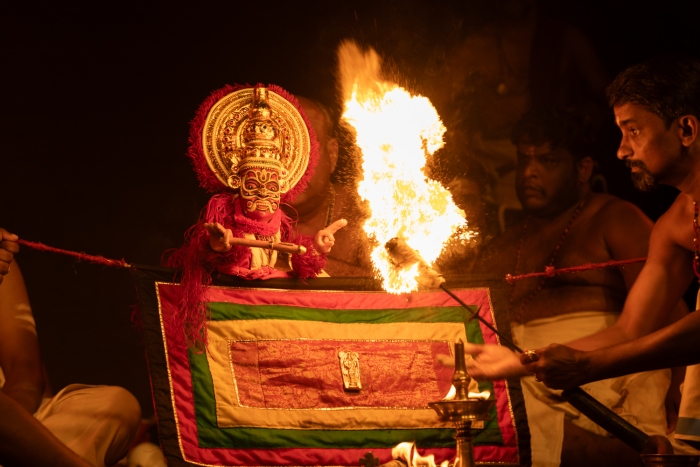 Entry of Veerabhadra in 'Dakshayagam' The Natanakairali Troupe of Pavakathakali later travelled all over the world, attending almost all important festivals of puppetry. Venu's younger brother Ravi Gopalan Nair, and Sreenivasan Kunnambath also joined the troupe, which developed a repertoire of four plays, including 'Uttara Swayamvaram,' 'Duryodhana Vadham,' and 'Dakshayagam.' Decades later, with the present members of the troupe advancing in age, it was time to carve out a new generation of performers without which the art form might once again slip back into the brink of obscurity. This time it was Kapila Venu, well known Kutiyattam and Nangiarkoothu performer and G Venu's daughter, who took up the initiative to ensure the continuity of her father's lifelong mission. Armed with a support from Bhuvana Foundation, Kapila set upon the task of training a new generation of Pavakathakali artistes. 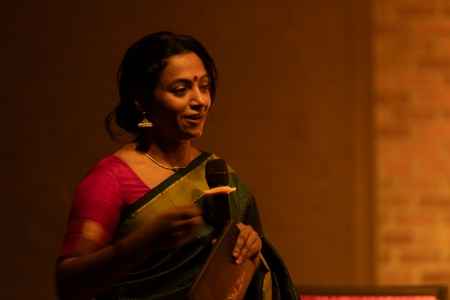 Kapila Venu 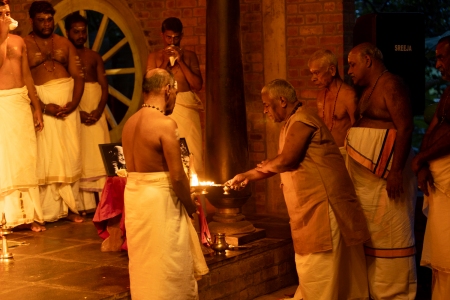 G Venu inaugurating the workshop At the end of a two month long workshop held at Natanakairali, training was imparted to four new artistes from the younger generation of Paruthippully's traditional Pavakathakali artistes. Hareesh, Ratheesh, Rajesh, Sachin and Sreekumar belong to the same family and tradition. It was decided to select artistes from the same lineage as that would make an easier transition. Along with the training, a new performance was also added to the repertory, 'Balivadham,' directed and choreographed by G. Venu. Kalanilayam Ramakrishnan and Kalanilayam Unnikrishnan were the mentors for vocal and chenda respectively. As the stage was set at Kottichetham Theatre of Natanakairali for the premiering of 'Balivadham,' as well as for the debut performance of the new generation of Pavakathakali artistes, the seamless continuation of another vital heritage was being secured. The performance started by the trainees seeking the blessing of the gurus and mentors from the first batch of puppeteers and percussionists, including V. Thankappan Asan, a veteran chenda player from the Andi Pandaram community who has retired due to health reasons. 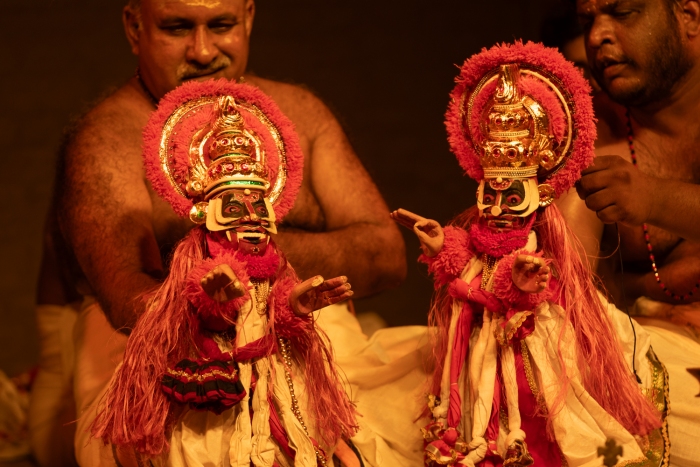 Bali & Sugriva in 'Bali Vadham' 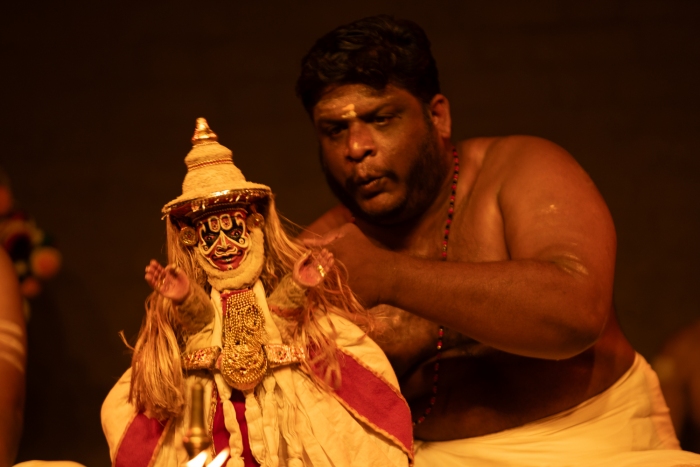 Hanuman in 'Kalyanasougandhikam' Beginning with 'Kalyanasougandhikam,' the performance moved on to 'Dakshayagam,' and then, to the premiering of the new production, 'Balivadham.' The artistes included K.V. Ramakrishnan, K.C. Ramakrishnan, Sreenivasan Kunnambath, Kalanilayam Haridas, Hareesh, Ratheesh, Rajesh and Sachin with vocal accompaniment by Kalanilayam Ramakrishnan and Kalamandalam Vasudevan Namboothiri, and Chenda (percussion) by Kalanilayam Unnikrishnan and Rajesh. 'Balivadham,' the new production of Pavakathakali directed by G. Venu, was a stunning performance depicting the death of Bali. With a new production, and a team of younger artistes, the glove puppet tradition of Kerala is all set to survive for another generation. 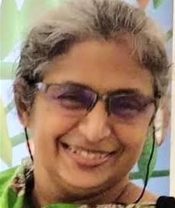 Renu Ramanath is an independent journalist and theatre critic, columnist and translator, cultural activist and organizer focusing on visual and performing arts based in Kerala. Post your comments Pl provide your name and email id along with your comment. All appropriate comments posted with name & email id in the blog will also be featured in the site. |